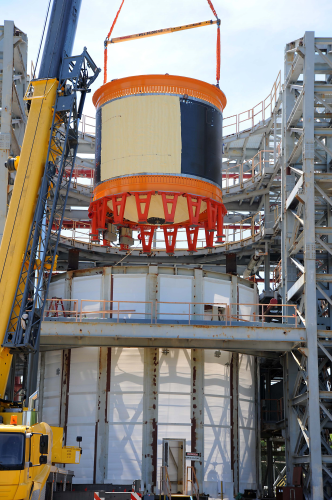
Video: NASA tests large rocket fuel tank.
NASA says this brings the aerospace industry much closer to designing, building and flying lightweight, composite tanks on rockets.
| Boeing has also released a video about its work on the composite cryotank project. View it here. |
“This is the culmination of a three-year effort to design and build a large high-performance tank with new materials and new processes and to test it under extreme conditions,” says John Vickers, the project manager for the Composite Cryogenic Technology Demonstration Project.
“We are a step closer to demonstrating in flight a technology that could reduce the weight of rocket tanks by 30% and cut costs by at least 25%”
A significant technology achievement
The tests were conducted at NASA’s Marshall Space Flight Center in Huntsville, Alabama. Engineers added structural loads to the tank to replicate the physical stresses launch vehicles experience during flight.
In other tests, the tank successfully maintained fuels at extremely low temperatures and operated at various pressures. Engineers filled the tank with almost 30,000 gallons of liquid hydrogen chilled to -423°F, and repeatedly cycled the pressure between 20-53 lb/in2 – the pressure limit set for the tests.
“Never before has a tank of this size been proven to sustain the thermal environment of liquid hydrogen at these pressures,” says Dan Rivera, Boeing programme manager for the cryotank project.
“Our design is also more structurally efficient then predecessors. This is a significant technology achievement for NASA, Boeing and industry. We are looking at composite fuel tanks for many aerospace applications.”
The project is part of NASA's Space Technology Mission Directorate, which is innovating, developing, testing and flying hardware for use in NASA's future missions.




